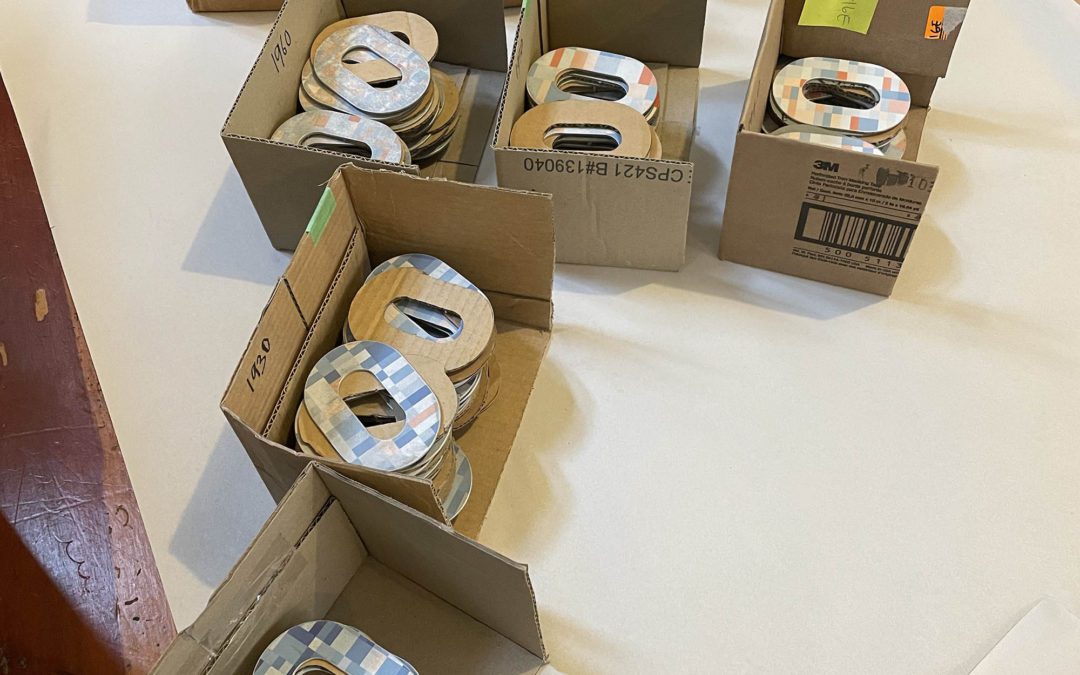Becky has been cutting out chain links from sheet aluminium, lots and lots of chain links. She described this slow process as feeling like “a kind of penance” — a gesture toward the debt owed to younger generations for the climate crisis.
The work that Becky is making is a continuation of her series about climate change. In some ways, the work combines her skills as a graphic designer and a jeweller. The pattern of blues and reds that changes across the work is drawn from data made freely available by Reading University.

The grid-like pattern references weaving. The textile industry was an early contributor to the huge changes of the industrial revolution, something Becky has written about before — and this connection intrigued me. For the shift to mechanised weaving represents not only a shift to more fossil-fuel-intensive way of working, but a loss of cultural knowledge held in hands: how to weave and the thousands of pattern languages that represented a continuous handing down from generation to generation.
In this way, historical examples of textiles provide us with so much information about the ways our ancestors made things around the world. Becky lent me a brilliant book called The Golden Thread – a global history of textiles told through a series of snapshots. As I mentioned in my post about Rowan’s lacework, there are several makers in this show whose practices reference textiles. I think it’s because textiles so naturally inhabit the show’s themes of cultural continuity, with practices like knitting and lacework — embedded as they are with historical knowledge held in hands and patterns, rather than speech.
— Emma
